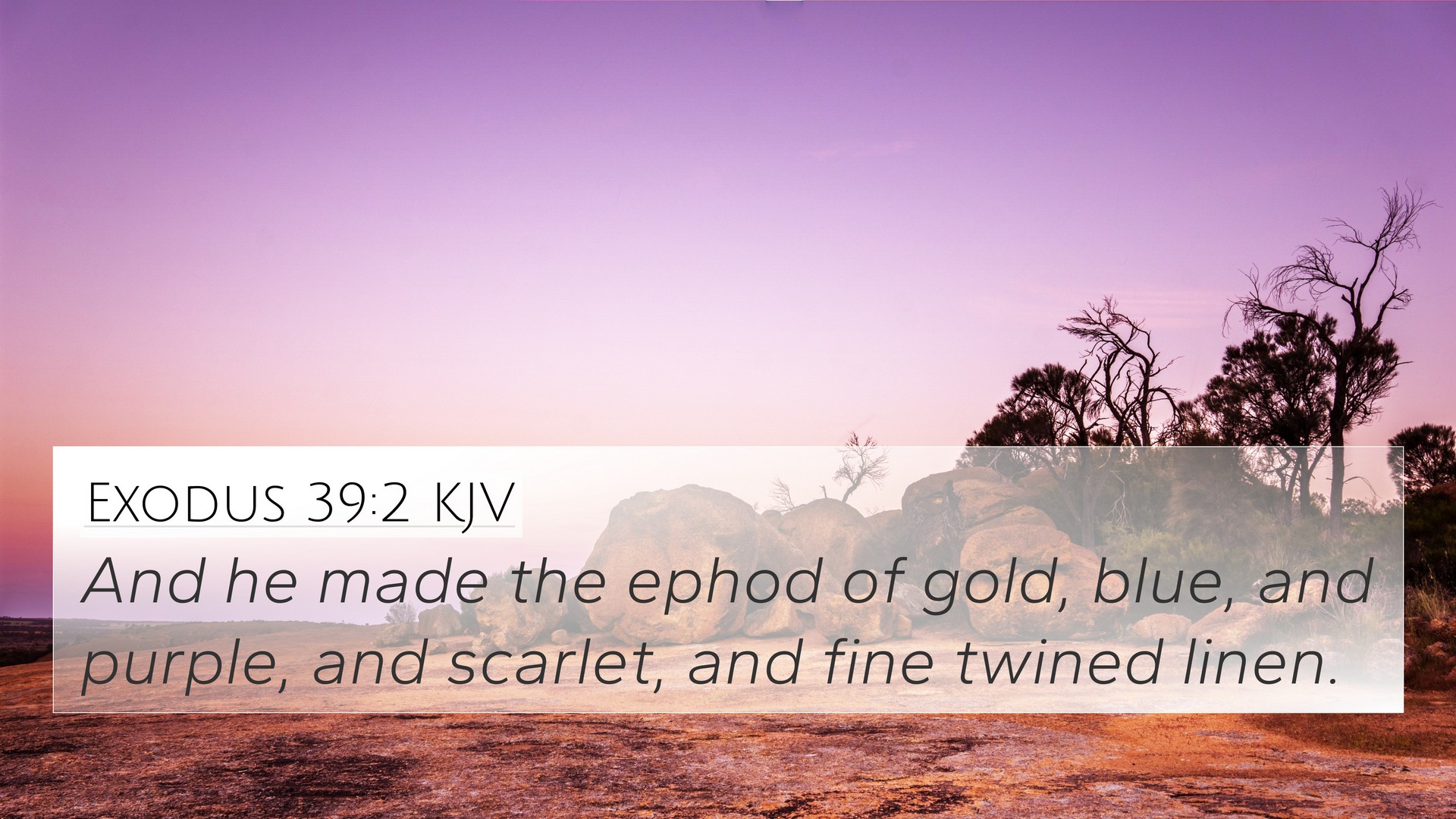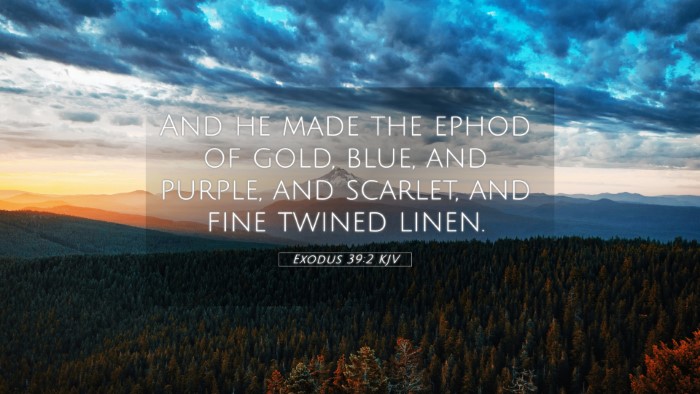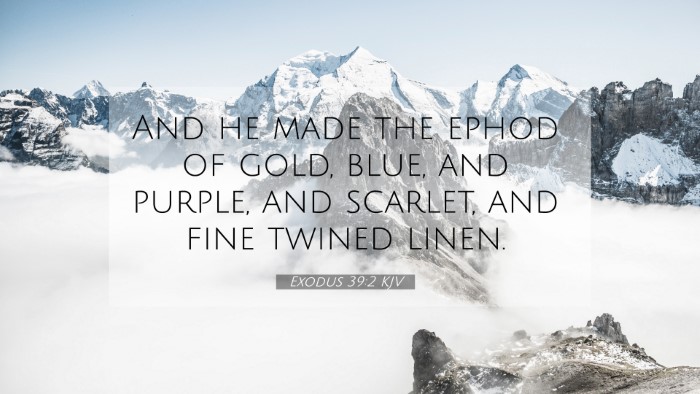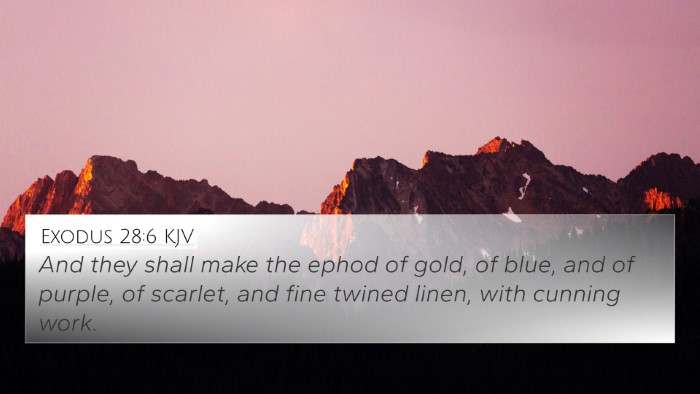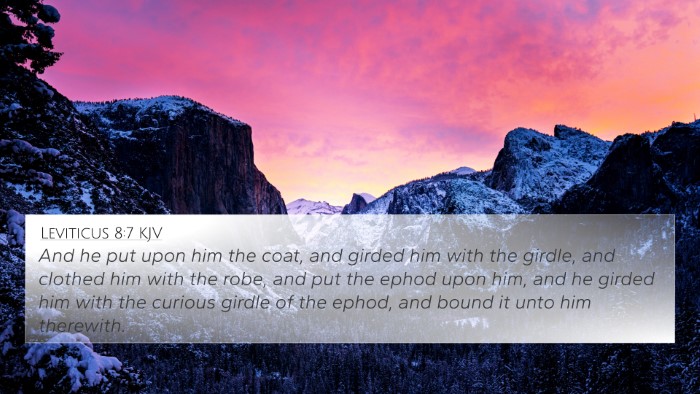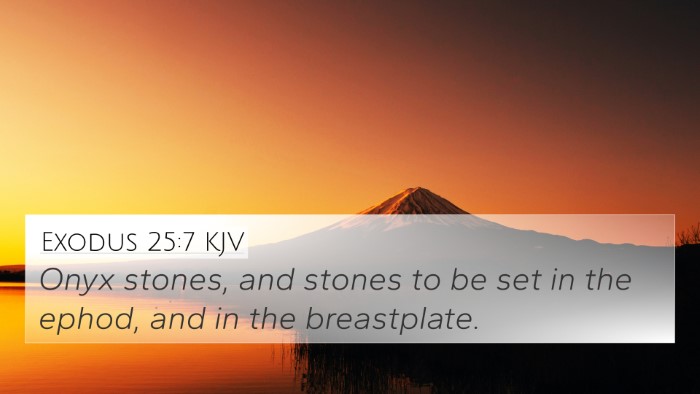Understanding Exodus 39:2
Exodus 39:2 states, "And he made the ephod of gold, blue, and purple, and scarlet, and fine twined linen." This verse speaks to the construction of the high priest's ephod, an important piece of the priestly garments, showcasing the beauty and significance of the role of the priest in Israel's worship.
Commentary Insights
-
Matthew Henry's Commentary:
Henry emphasizes the importance of the ephod, detailing how its construction involved the finest materials, symbolizing the dignity and holiness of the priestly office. He notes that the use of gold and vibrant colors indicates not merely functionality but also the splendor of worship and service to God.
-
Albert Barnes' Notes:
Barnes elaborates on the ephod's design, noting its significance in representing the children of Israel before God. He explains how each color and material reflects a deeper spiritual meaning, inviting worshippers to consider the beauty of God’s covenant and His chosen people.
-
Adam Clarke's Commentary:
Clarke discusses the historical context of the priestly garments, indicating how they served ceremonial functions that linked the people of Israel to God's presence. The ephod's design is both practical for religious duties and an expression of divine glory.
Thematic Connections
The ephod is emblematic of various biblical themes, including:
- The Role of the Priesthood: As mediators between God and the people, the priests' garments symbolize their sacred responsibilities.
- Worship and Aesthetics: The choice of materials reflects God's desire for beauty in worship, urging believers to present their best to Him.
- Covenant Relationship: The ephod signifies God's ongoing commitment and relationship with Israel, represented through the symbolic nature of the colors and materials used.
Cross-References
Exodus 39:2 connects to several other scriptures that illuminate its meaning:
- Exodus 28:6-14: Details the instructions for creating the high priest's ephod, providing context for its significance.
- Leviticus 8:7-9: Describes the consecration of Aaron and his sons as priests, further cementing the importance of the priestly garments.
- 1 Samuel 2:28: Refers to the priestly duties and the garments linked with service in the house of the Lord.
- Hebrews 5:4: Discusses the high calling of the priesthood, paralleling the Old Testament design with New Testament revelation.
- Revelation 19:8: Speaks of the attire of the saints, linking the concept of righteous garments with priestly symbolism.
- Matthew 27:51: Introduces the tearing of the temple veil, symbolizing the end of the Old Covenant priestly system and the access to God through Christ.
- Galatians 3:26-27: Relates to believers' identity as children of God, echoing themes of spiritual purity akin to high priestly garments.
Conclusion
Exodus 39:2 serves as a focal point for understanding the significance of the priestly office in ancient Israel. It outlines a vivid depiction of worship, the beauty of God's design, and the deep spiritual implications of representation before God. By employing cross-references, we observe the interconnectedness of scripture, comparing and contrasting themes that resonate throughout the Bible.
For those studying the Bible, engaging with cross-references is a vital tool in grasping the relationships between verses and gaining a richer understanding of biblical themes. This method enables believers to interpret and apply scripture contextually, drawing deeper insights from the entirety of God’s Word.
Tools for Bible Cross-Referencing
Utilizing bible cross-reference guides and bible concordances can significantly enhance your study, helping you identify vital connections and thematic parallels. Resources such as cross-reference bible study methods and bible reference resources can facilitate a profound exploration of scripture, leading to a more holistic understanding of God’s message.
